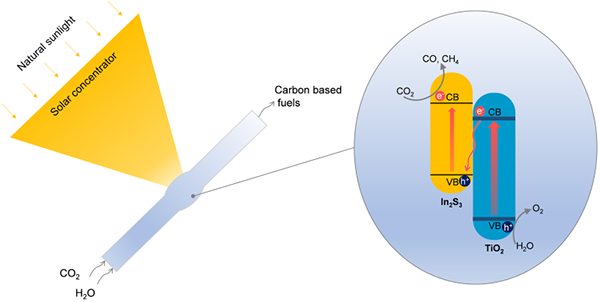Construction of Z-Scheme In2S3-TiO2 for CO2 Reduction under Concentrated Natural Sunlight
Ya Liu*, Fangbo Yu, Feng Wang, Shengjie Bai and Guiwei He
Chin. J. Struct. Chem. 2022, 41, 2201034-2201039 DOI: 10.14102/j.cnki.0254-5861.2021-0046
January 13, 2022
solar energy, CO2, In2S3, TiO2
ABSTRACT
Producing chemical fuels from sunlight enables a
sustainable way for energy consumption. Among various solar fuel generation
approaches, photocatalytic CO2 reduction has the advantages of
simple structure, mild reaction condition, directly reducing carbon emissions,
etc. However, most of the current photocatalytic systems can only absorb the
UV-visible spectrum of solar light. Therefore, finding a way to utilize
infrared light in the photocatalytic system has attracted more and more attention.
Here, a Z-scheme In2S3-TiO2 was constructed
for CO2 reduction under concentrated natural sunlight. The infrared
light was used to create a high-temperature environment for photocatalytic
reactions. The evolution rates of H2, CO, and C2H5OH
reached 262.2, 73.9, and 27.56 µmol·h-1·g-1,
respectively, with an overall solar to fuels efficiency of 0.002%. This work
provides a composite photocatalyst towards the utilization of full solar light
spectrum, and could promote the research on photocatalytic CO2 reduction.








